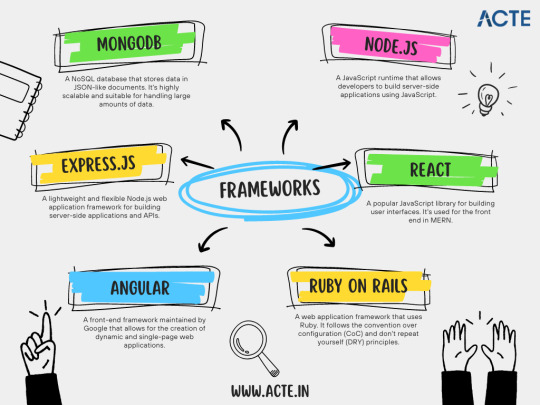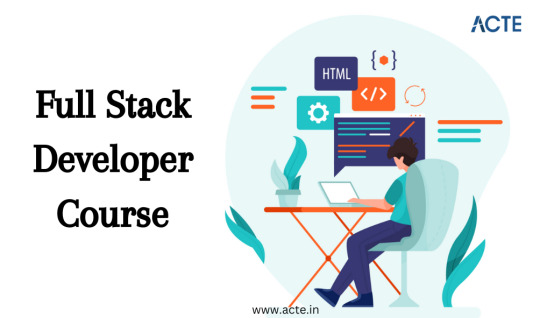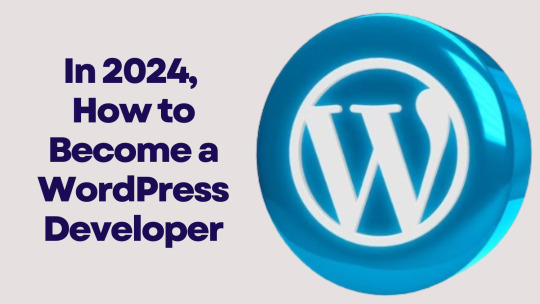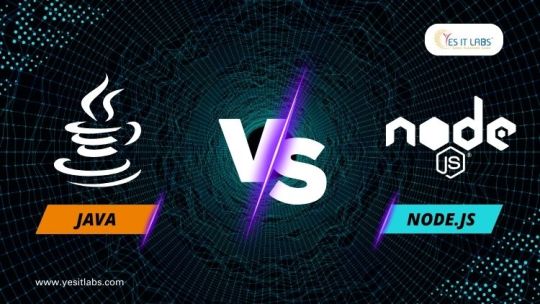#Nodejs Backend Development
Explore tagged Tumblr posts
Text
Progress:
Okay so the authentication for spotify is hard for me to understand and requires user authentication, then making a token request that while expire in an hour. So i focused on what I did know how to do and what I had access to token wise. The Spotify developer home page has a temporary access token for demos. I took that token and made a function to make get request to the API and two functions for top tracks and top artists. Then made some functions to print them in my terminal. Here is what my end product looked like in the terminal.


The data for tracks is proving to just show a years worth of listening even though I specified long_term in my get request.
Here is my code:

I tried just doing track.artist but Spotify handles that as multiple artists so I had to handle them as such.
Next Steps: Tackling the user authentication and token requests and including it in this code.
(Also yes I know that is a concerning amount of My Chemical Romance tracks. I had my MCR phase strike up again with a passion last October and I am still balls deep in it.)
#coding#baby coder#web developers#spotify api#software engineering#web development#javascript#nodejs#node-fetch#terminal app#visual studio code#vs code#backend#frontend#my chemical romance#the weakerthans#u2#modern baseball#pup the band#oasis#wilco#misfits#descendents#programmer#programming#github#developers
11 notes
·
View notes
Text
Project update (Next.js) + little API routing tutorial
So my last post was about setting up my back-end using Node.js and Sequelize. After setting everything up it was time to create needed routes and queries. I didn't look too much into how to do it, just made an api folder, made a .ts file for every table I have in my database and filled it with CRUD operations + whatever additional query was needed.

After writing all of this I wondered how do I define links for all of these operations? Well as it turns out, when you put files in an api folder in Next.js, they generate by themself, meaning all of my crud operations were now under the same /api/file_table_name link. Obviously that's bad news. It took me 2 days of rearranging (it wasn't hard, just boring XD) and I got this structure

(This is not an entire structure, just a snippet because the whole structure is kinda big and pointless for demonstration)
So now for getting host/api/tag we have an index.ts file which carries the createTag function which requires just a body that contains new tagName.
For host/api/tag/id we have the [id].ts which carries getTagById and DeleteTag function. Now how do we differentiate between those two operations when they are on the same link?

At the end of your file you should have a handler function for which you write the cases in which certain operation happen. In this case it only depends on the http method, but it is possible to add other cases such as potential query string (the on that start with ? in the link ex. api/posts?sort=asc). Here's the code example from my /stickerpack/[id].ts file

So this means the link is going to be host/api/stickerpack/id?type="".
What surprised me was that you don't fetch id with req.params.id, but you fetch everything with req.query, and Next.js I guess just figures out what is a parameter and what is not based on the file name. Another surprising thing is the obvious "id as any" situation XD. It did not work any other way. No idea why. I'll look it up when I get the energy.
That's my wisdom for today, if you have any questions feel free to ask me anywhere XD I'm no professional tho lol
#codeblr#progblr#code#nextjs#full stack web development#webdevelopment#student#studyblr#tutorial#programming#computer science#backend#nodejs#women in stem
32 notes
·
View notes
Text
Becoming a Full Stack Developer: My Roadmap to Mastery
Embarking on my journey to become a full stack developer has been nothing short of a thrilling adventure. It's been filled with moments of incredible learning, personal growth, and a profound passion for creating digital solutions that truly make a difference. From the fascinating world of front-end design to the intricate workings of back-end development, let me take you through my personal roadmap to mastering the art of full stack development.

Defining Full Stack Development
At its core, I see a full stack developer as a tech-savvy magician who possesses the unique ability to bring both the user-facing magic of the front end and the powerful machinery of the backend to life. It's not merely about coding; it's about the art of crafting seamless user experiences while skillfully managing the complex infrastructure that makes it all possible.
Self-Assessment
Like any journey, mine began with self-awareness. I took a close look at my existing skills and knowledge. I uncovered my strengths to build upon and identified the areas where I needed improvement. This self-assessment became the bedrock upon which I constructed my roadmap, allowing me to set clear, focused goals for my full stack development journey.
Front-End Development Skills
Mastering front-end technologies proved to be a thrilling challenge. Moving from the foundational HTML and CSS, which provide structure and style to web pages, to delving into the captivating realm of JavaScript with its dynamic interactions, each step forward brought its own set of revelations and challenges. My journey was marked by moments of both frustration and triumph as I evolved from crafting basic layouts to creating intricate user interfaces that sprung to life at the simple click of a button.
Back-End Development Skills
Transitioning to the backend was like stepping into a whole new world of data management, server intricacies, and complex logic. Learning languages like Python, diving deep into databases like MySQL, and exploring frameworks such as Flask and Django became the building blocks of my backend journey. The sheer satisfaction of watching my code efficiently manage data and orchestrate complex operations fueled my determination to keep pushing forward.
Bridging the Gap
The leap from front-end to back-end wasn't a smooth one. Bridging this gap required not only the acquisition of new technical skills but also a shift in mindset. The challenges were numerous – learning to handle data securely, optimizing performance, and orchestrating intricate processes. I adopted various strategies to make this transition seamless, eventually allowing me to unite my front-end and back-end skills into a unified full stack approach.
Full Stack Development Frameworks
The full stack development world introduced me to a plethora of frameworks designed to streamline the entire process. Frameworks like MEAN (MongoDB, Express.js, Angular, Node.js) and MERN (MongoDB, Express.js, React, Node.js) became my trusted companions. They not only accelerated development but also offered valuable insights into the best practices of full stack architecture.

Building Projects
Knowledge truly gains momentum when it's put into practice. Building projects became an essential part of my journey. These projects provided the practical experience necessary to solidify my skills. Whether it was crafting dynamic e-commerce platforms or developing interactive web applications, each project served as a canvas for innovation, experimentation, and continuous improvement.
Continuous Learning
Full stack development is an ongoing journey without a defined finish line. The ever-evolving landscape continually demands learning and adaptation. To stay updated with emerging trends and technologies, I relied on online platforms, coding communities, and valuable resources like full stack developer course and blogs provided by ACTE.

Challenges and Rewards
This journey had its fair share of difficulties, of course. Debugging cryptic errors, optimizing code for performance, and keeping pace with rapid technological advancements were just a few of the hurdles I encountered. However, the rewards far surpassed the struggles. The ability to transform ideas into functional applications, the satisfaction of solving intricate puzzles, and the sheer joy of witnessing my work in action were the driving forces that kept me moving forward.
Networking and Community
In today's digitally connected world, networking is an invaluable asset. Engaging with developer communities and attending meetups opened doors to fresh perspectives, exciting collaborations, and invaluable insights. The support and camaraderie of fellow developers served as a constant reminder that I wasn't alone on this journey.
Becoming a full stack developer is about more than just acquiring technical skills; it's a transformative journey of self-discovery, overcoming challenges, and embracing growth. To all those aspiring full stack developers out there, my advice is to wholeheartedly embrace each challenge as a learning opportunity. Your roadmap may take unexpected turns, but with dedication, resilience, and a deep passion for innovation, you too can navigate the path to mastery. The world of full stack development awaits – so go forth and code boldly!
6 notes
·
View notes
Text
#best nodejs development company#Best use cases for Node.js#Node.js backend development#Node.js speed and scalability#Node.js use cases#top nodejs development company
0 notes
Text
2024's Top Backend Frameworks: What You Need to Know
Discover the top Backend Frameworks of 2024, designed for maximum performance and scalability." Stay ahead of the competition with innovative tools designed to match the demands of today's technology landscapes.

0 notes
Text
#frontend developer#backend developer#nodejs#mongodb#classes#courses#training#institute#placement#job guarantee#codekul#placementassistance
0 notes
Text

Online Freedemo On Fullstack Development
Join Now: https://bit.ly/3V6p367
Attend Online #Freedemo On #Fullstackdevelopment with #ReactJs by Mr. Keshav.
Demo on: 5th June @ 8:00 AM (IST).
Contact us: +91 97044 55959.
WhatsApp: https://www.whatsapp.com/catalog/917032290546/
Blog link: https://visualpathblogs.com/
Visit: https://www.visualpath.in/full-stack-mern-online.html
#javascript #FullStack #webdevelopment #developer #html #css #frontend #backend #mobileapp #webapp #software #education #onlinetraining #Visualpath #TechEducation #students #ITCourses #reactjs #nodejs #bootstrap #git #expressjs #MySQL #MongoDB #postman
#javascript#FullStack#webdevelopment#developer#html#css#frontend#backend#mobileapp#webapp#software#education#onlinetraining#Visualpath#TechEducation#students#ITCourses#reactjs#nodejs#bootstrap#git#expressjs#MySQL#MongoDB#postman
0 notes
Text
#fullstackdevelopercourseinchennai#fullstack#developer#course#chennai#webdevelopment#frontend#backend#HTML#CSS#JavaScript#Nodejs#Expressjs#training#technology
0 notes
Text
Seneca is a microservices framework for Node.js that allows you to build modular and scalable applications. It follows the microservices architecture by providing a toolkit for creating and managing small, independent services. Here's a basic guide on how to use the Seneca framework
#nodejs#node js#node red#node js online#npm stripe#node js backend#npmjs#node cron#javascript node#axios npm#stackoverflow#jsx#web design#web dev#web development#website#programming#backedn#backend eng#tech#technology#engineering
0 notes
Text
Seneca is a microservices framework for Node.js that allows you to build modular and scalable applications. It follows the microservices architecture by providing a toolkit for creating and managing small, independent services. Here's a basic guide on how to use the Seneca framework
#nodejs#node js#node red#node js online#npm stripe#node js backend#npmjs#node cron#javascript node#axios npm#stackoverflow#jsx#web design#web dev#web development#website#programming#backedn#backend eng#tech#technology#engineering
0 notes
Text
Seneca is a microservices framework for Node.js that allows you to build modular and scalable applications. It follows the microservices architecture by providing a toolkit for creating and managing small, independent services. Here's a basic guide on how to use the Seneca framework
#nodejs#node js#node red#node js online#npm stripe#node js backend#npmjs#node cron#javascript node#axios npm#stackoverflow#jsx#web design#web dev#web development#website#programming#backedn#backend eng#tech#technology#engineering
0 notes
Text
Seneca is a microservices framework for Node.js that allows you to build modular and scalable applications. It follows the microservices architecture by providing a toolkit for creating and managing small, independent services. Here's a basic guide on how to use the Seneca framework
#nodejs#node js#node red#node js online#npm stripe#node js backend#npmjs#node cron#javascript node#axios npm#stackoverflow#jsx#web design#web dev#web development#website#programming#backedn#backend eng#tech#technology#engineering
0 notes
Text
In 2024, How to Become a WordPress Developer

In today's era of digitization, having a functional and feature-rich website is crucial for sustaining and excelling in business. One of the leading platforms for website development is WordPress, a versatile content management system (CMS) that has evolved beyond its origins as a blogging platform. If you aspire to become a WordPress developer, this guide will provide you with insights and steps to embark on a rewarding career in web development.
Why WordPress?
WordPress holds a dominant position in the website development market, with 35% of all websites built on this platform. Its market share is an impressive 62%, highlighting its widespread adoption. To tap into the immense opportunities offered by WordPress development, you need the right skills and guidance.
Roles and Responsibilities of a WordPress Developer
A WordPress developer is responsible for building high-end, customized web applications that cater to the specific needs of clients. This includes both front-end and back-end development, as well as creating custom themes and plugins. Here are some key responsibilities:
Install and Configure WordPress: Set up the software on a server, configure databases, and install themes and plugins while ensuring security and optimization.
Design and Develop Themes and Plugins: Develop scalable and high-performance themes and plugins using technologies like PHP, HTML, CSS, and JavaScript, adhering to WordPress coding standards.
Set up WooCommerce Shops: Configure and optimize WooCommerce stores, integrating payment gateways and third-party APIs for an enhanced shopping experience.
Identify and Address Errors: Conduct thorough testing, troubleshoot issues, and resolve errors, ensuring a seamless user experience.
How to Become a WordPress Developer
To become a successful WordPress developer, follow these steps:
Master the Fundamentals of Coding: Acquire a solid understanding of HTML, CSS, JavaScript, and PHP. These fundamental coding skills will empower you to troubleshoot, debug, and develop custom themes and plugins.
Read About WordPress Development: Explore online resources such as WordPress Codex, Envato Tuts+, and WordPress Developer Resources to deepen your knowledge of WordPress.
Choose an Area to Explore: Decide whether you want to specialize in Core WordPress Development, WordPress Theme Development, or WordPress Plugin Development.
Develop a Development Environment: Set up a local or remote development environment to test and review files, collaborate with teams, and streamline the development process.
Contribute to the WordPress Community: Engage with the vast WordPress developer community through WordCamp meetups and online forums. Stay updated on the latest trends and advancements.
Build a Portfolio: Create a professional portfolio showcasing your projects, skills, and achievements. Include details about custom themes and plugins, client names, testimonials, and any demo websites you've developed.
In conclusion, aspiring WordPress developers can achieve success by following these steps, whether joining a company like Devstree Australia or working independently. Continuous learning and skill enhancement will position you as an ideal candidate for businesses seeking WordPress expertise, ensuring a prosperous career in this dynamic and ever-evolving CMS.
https://devstree.com.au
#australia#devstreeau#mobileappdevelopment#iphone#mobile app developer company#web app development#ios#mobile app company#iot app development#iot applications#nodejs#angulardevelopers#blockchain#metaverse#full stack developer#css#frontend#backend
0 notes
Text

Node.js vs. Java: Which One is Better for Backend Development?
Delve into the Node.js vs. Java discussion in backend development. Examine the merits of each to make a well-informed decision for your upcoming project. Find the technology that aligns most effectively with your backend necessities.
#Java Vs Nodejs#Javascript Vs Nodejs#Nodejs development company#Backend Development#Web Development Company
0 notes
Text
Explore the latest capabilities of JNext Node, where technology meets innovation. Discover a hub of transformative solutions designed to propel your business into the future. Visit now for a seamless journey into the next era of digital excellence at Node JS Development Company in London.
#Node JS Development Company#NodeJS Agency#NodeJS Company#NodeJS Services#NodeJS Expert#NodeJS Developers#Node JS Backend#NodeJS Development Bhavnagar
0 notes